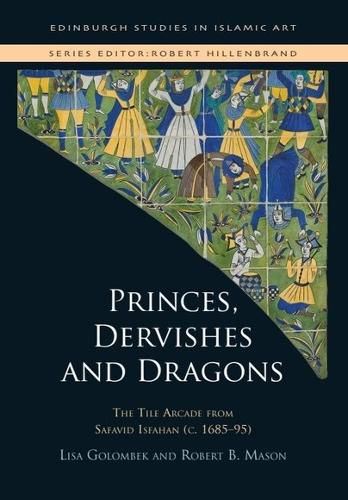Readings Newsletter
Become a Readings Member to make your shopping experience even easier.
Sign in or sign up for free!
You’re not far away from qualifying for FREE standard shipping within Australia
You’ve qualified for FREE standard shipping within Australia
The cart is loading…






Toward the end of the nineteenth century much of Iran's architectural heritage gave way to urban development. Among the casualties were the seventeenth-century Safavid palaces of Isfahan. Local dealers salvaged a series of astonishingly beautiful pictorial arch-shaped panels composed of cuerda seca tiles from one of these. Beginning in 1911 whole panels and many single tiles were sold through Hagop Kevorkian. The authors have assembled (digitally) 36 friezes once part of this set.
The iconographic program consisted of three themes: secular pastimes (picnics, hunt, games), Persian literary episodes, and religious festivals (e.g., the Ashura). The first two themes have a long history in Iranian mural painting, but the third was new and will be of interest to cultural historians. The friezes are stylistically datable to c. 1685-95. One clue to the identity of the original site is the duplication of almost all the friezes. The authors deduce that the scenes were paired across a courtyard and suggest three possible sites. Fully assembled, the suite emerges as a hitherto unknown, outstanding creation that should be added to the canon of Safavid art.
$9.00 standard shipping within Australia
FREE standard shipping within Australia for orders over $100.00
Express & International shipping calculated at checkout
Toward the end of the nineteenth century much of Iran's architectural heritage gave way to urban development. Among the casualties were the seventeenth-century Safavid palaces of Isfahan. Local dealers salvaged a series of astonishingly beautiful pictorial arch-shaped panels composed of cuerda seca tiles from one of these. Beginning in 1911 whole panels and many single tiles were sold through Hagop Kevorkian. The authors have assembled (digitally) 36 friezes once part of this set.
The iconographic program consisted of three themes: secular pastimes (picnics, hunt, games), Persian literary episodes, and religious festivals (e.g., the Ashura). The first two themes have a long history in Iranian mural painting, but the third was new and will be of interest to cultural historians. The friezes are stylistically datable to c. 1685-95. One clue to the identity of the original site is the duplication of almost all the friezes. The authors deduce that the scenes were paired across a courtyard and suggest three possible sites. Fully assembled, the suite emerges as a hitherto unknown, outstanding creation that should be added to the canon of Safavid art.